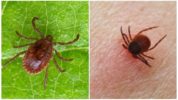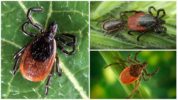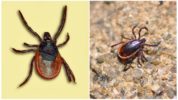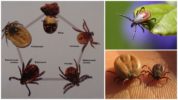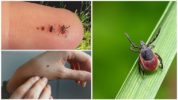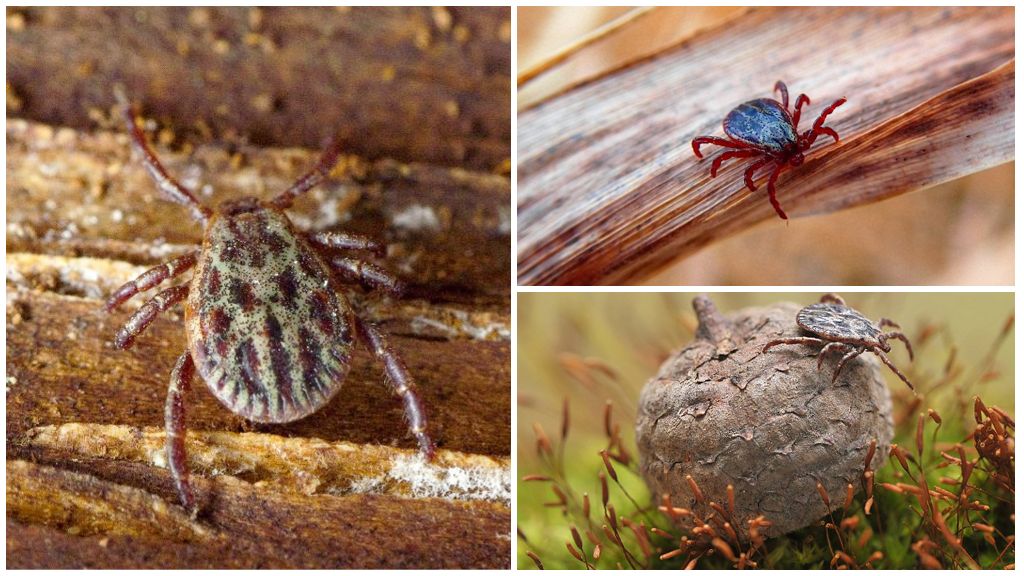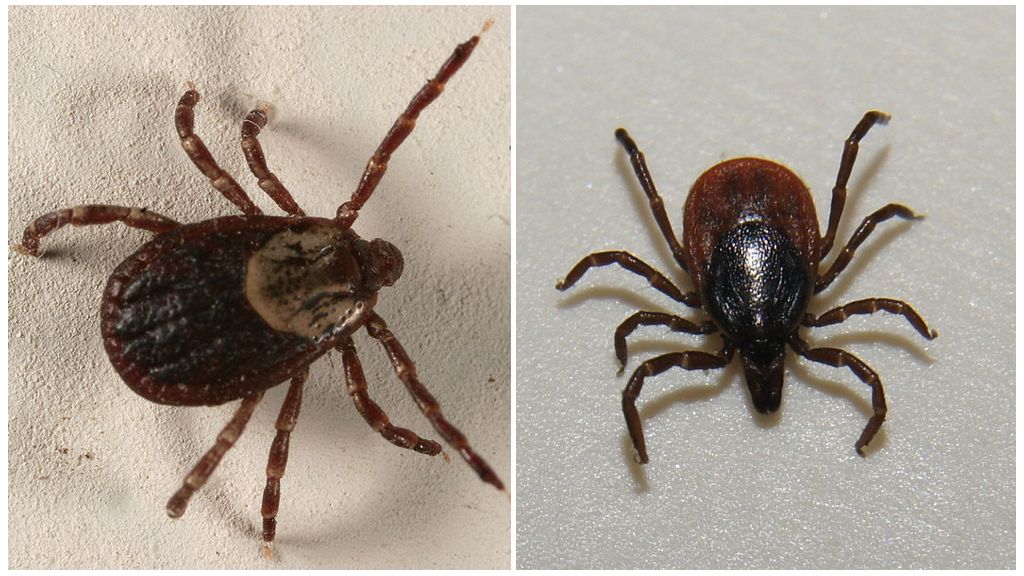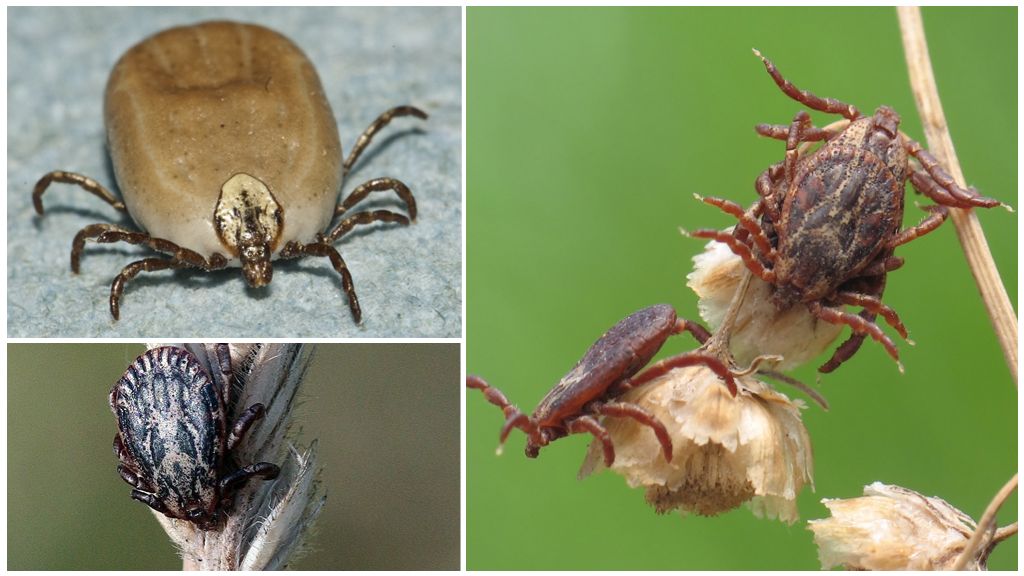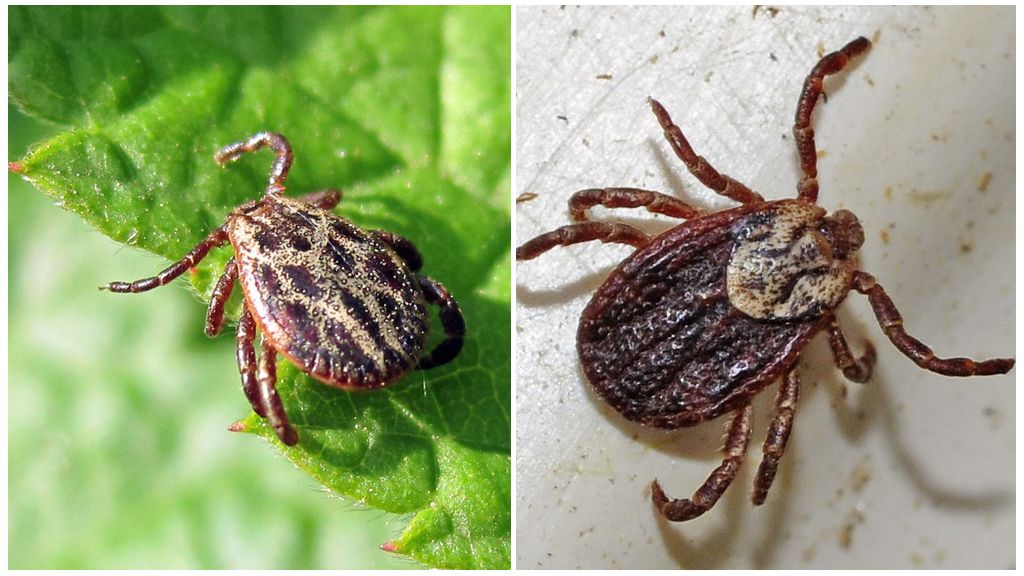- Tick-borne Encephalitis
- Dog tick
- Taiga tick
- Tick Life Cycle
- Ticks
- Symptoms of European encephalitis in the first stage of the disease
Encephalitis - one of the most dangerous viral diseases, incurable so far. Encephalitis vector can be any "reusable" bloodsucker, who first drank blood from an infected animal, and then "snacked" by a person. But the main danger is ticks, popularly referred to as encephalitis. A separate type of "encephalitis tick" in nature does not exist. The main carriers of this disease among arachnoid-like are at once two species ixodid ticks: dog and taiga.
Distribution area of encephalitis virus
Ticks are found throughout the Eurasian continent, but only residents of a rather narrow strip, passing approximately in the middle of Eurasia, have the risk of contracting encephalitis.
On a note!
In Russia, all three types of encephalitis virus are present. In the European part, the spread of the disease is dog tick, in Asian - taiga.
A clear division of the territory between the types of viruses is observed: before the Urals, the European type of virus is present in the territory of the Russian Federation, after the Ural Mountains through the whole Siberia to the Far East, Far Eastern type of encephalitis is rampant. The natural reservoir of the virus is sick animals whose blood these arthropods feed on.
Tick infestation with encephalitis is also higher in the Asian part of Russia. Beyond the Ural Range, 20 percent of ticks are infected with the virus.
What does an encephalitis tick look like?
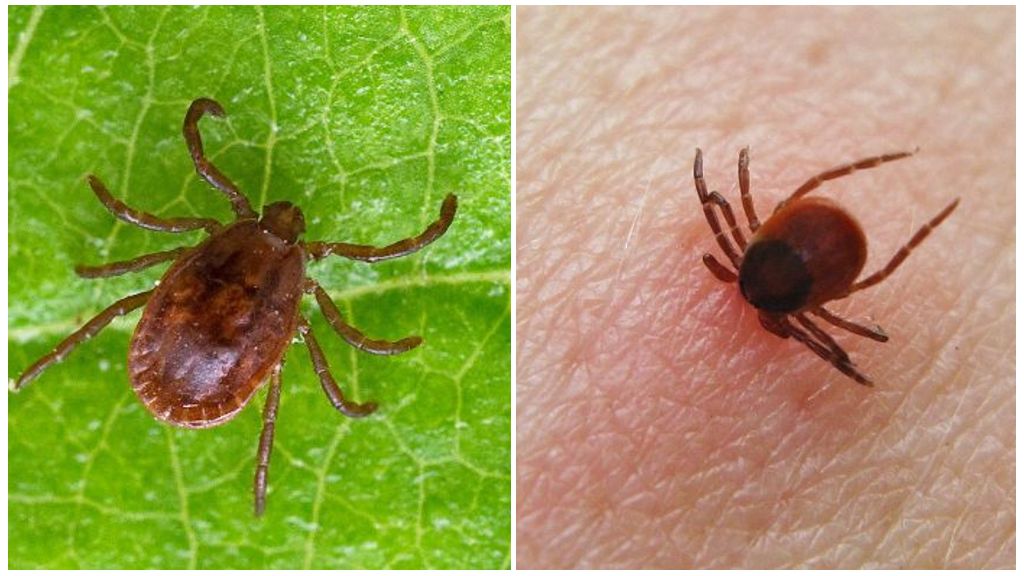
Since there is no separate type of arachnoid-like virus carrying the virus, a photo of the encephalitis tick also does not exist. But, in order not to specify the type of tick every time, it is easier to call that arthropod that is infected with the virus and can transmit diseases to humans is encephalitic. You also need to consider the types that most often transmit the virus to humans. In all other cases, the risk of infection is not higher than with raw milk.
Dog tick
The Latin name for the species is Ixodes ricinus. Arthropods are widespread throughout the Eurasian continent. You can also meet him in North America and North Africa. The encephalitis virus is absent on the last two continents, and there this species of tick is not encephalitis. But it can reward other dangerous diseases.
A dog tick is an ordinary, familiar to almost all arachnoid-like. Dog breeders are more concerned about what they are delivering. pyroplasmosisthan encephalitis virus. Dimensions arthropods can be different depending on what stage of development the tick decided to drink blood. Larvae and nymphs begin to drink blood, which differ from adults only in size. The hungry nymph has a length of 1.3-1.5 mm. Adult male - 2.5 mm. Hungry adult female 4 mm long. After it is saturated, it swells up to 1.1 cm.
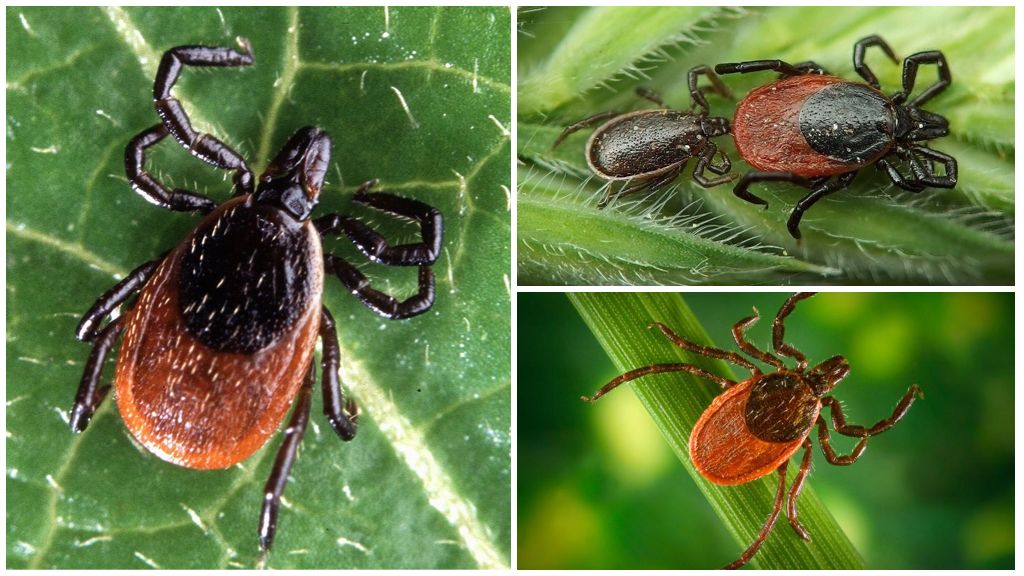
The body of the dog tick has the shape of an egg with a very sharp tip, there is a proboscis on the head. The back is protected by a dark brown shield. In males, the shield completely covers the entire body. In females, larvae and nymphs, the shield is much smaller and protects only the front of the back.The abdomen of a hungry female is gray from below and black from above.
On a note!
After saturation, the abdomen swells and the tick begins to resemble a small gray leather pouch with paws on the front side.
Taiga tick
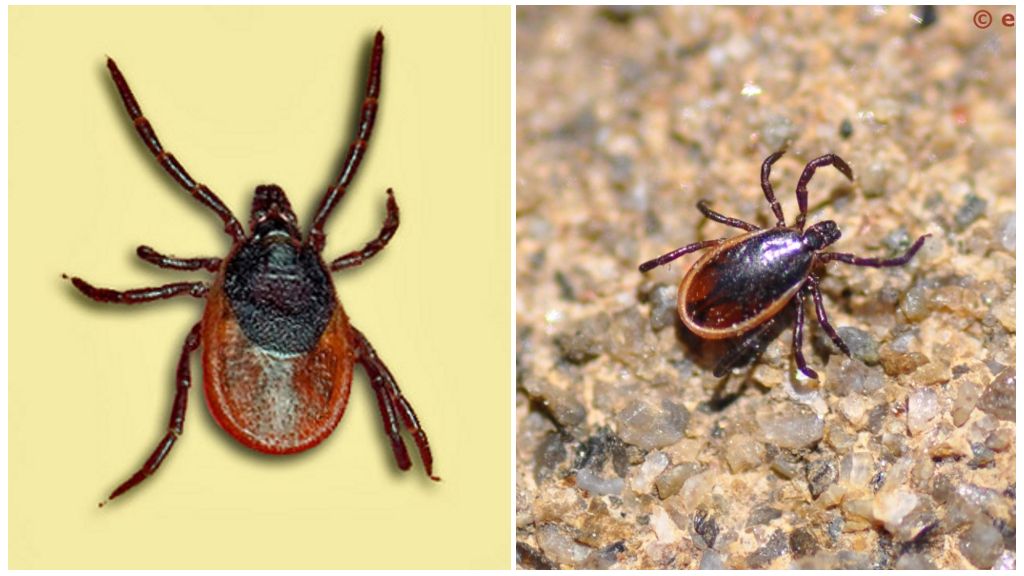
The second representative of the Ixodes with the Latin name Ixodes persulcatus. The main range of this species is in the middle and southern taiga. Taiga is associated with Siberia, so sometimes there is another name for this species: the Siberian tick.
The boundaries of this range taiga tick:
- West: Leningrad, Moscow region;
- East: up to the Pacific Ocean;
- north: South Karelia;
- south: Samara and Ulyanovsk regions.
Outside of Russia, the range of the tick captures Finland, the Baltic states, Belarus, and northwestern Europe. Separate foci are found in Kamchatka and the Kuril ridge. You can meet him in the mountainous regions of Central Asia.
Important!
In the Crimean forests, there is a tick that looks very similar to taiga. The peculiarity of the “Crimean” tick is the ability to bite into the skin to half of its body. Taiga eats similarly. It is possible that this is the same species.
The taiga mite is most often identified with an encephalitis tick due to the fact that this disease is very common in a significant part of its range.
Important!
Recently, this species is increasingly found in cities.
The size and shape of the body of the "encephalitic" tick is similar to its relative - a dog. But the belly of a hungry taiga tick is red.
They become blood-sucking already at the larval stage. If the nymph differs from the imago only in size, then the larva is a small translucent organism, already at this stage capable of transmitting the causative agent of the disease.
Important!
The female is able to transmit the virus to offspring, and a new generation is born already infected. Therefore, it is impossible to determine by the appearance of an arthropod whether it is a carrier of a viral disease. Even a larva can be a carrier of the virus.
Lifestyle

The European part of Russia is relatively safe for encephalitis, while outbreaks in Siberia have been observed since early spring, when there are no other blood-sucking parasites.
There are allegations that an adult lives only 3-4 months, but the emergence of the disease in early spring is due to the fact that even at a temperature of 1 ° C, encephalitis ticks wake up after wintering and go in search of a victim.
In fact, the life cycle of an encephalitis tick can be from 2 to 4 years. Life span arthropod depends on environmental conditions. The minimum development cycle takes 2 years, in the northern regions the development time from an egg to an adult can be 4 years. The average development period is 3 years. With a three-year period, the development of each stage of the encephalitis tick takes 1 year. In winter, arthropods have diapause.
At all stages of development, encephalitis ticks winter in forest litter, cracked stones, in the surface soil layer. Both hungry and blood-dying individuals leave for the winter.
The preimaginal stage takes 2-20 weeks. Its duration depends on environmental conditions. Maximum activity sexually mature encephalitis ticks occur in May-June. Larvae emerge from eggs in mid-summer.
On a note!
Adults are able to survive without food for up to 3 years. The female needs to leave offspring, and she can wait a long time for an opportunity. As a result, it turns out that the answer to the question of how much an encephalitis tick lives is very vague. Under adverse conditions and lack of food, the life span can last up to 6 years. Or reduce to 2 if the living conditions of arthropods are favorable and a quick turn of generations is needed.
Blood parasites need not only for their own development, but also for the implementation of oviposition. Therefore, males eat little blood, sometimes without it at all. Females drink a lot.The female sucked without interference impresses with its large size.
Tick infection routes
Encephalitis ticks feed on the blood of any mammals, as well as birds. In the area where the disease spreads, arthropod hunting sites are often infected with encephalitis virus. When feeding the victim’s blood, the tick “drinks” and the virus. This is the main version of how ticks become infected with encephalitis. The second way is the transmission of the virus from the female to offspring.
The arachnoid-like presence of the encephalitis virus in them is indifferent, therefore, there is no way to recognize “by eye” in the field the infected bloodsucker.
On a note!
You can find out whether the tick is encephalitis or not, only by passing it to the laboratory.
Precautionary measures
Ixods are waiting for their victims, sitting on the stems of grass and branches of shrubs. They rarely rise above a meter above the ground. There are no ways to determine the encephalitis tick right in the forest, so you need to follow precautionary measuresusing protective clothing.
When a victim arthropod begins to move up. This point is taken into account when collecting in the forest. Pants tuck into socks, sweater in trousers. The sleeves of a sweater or jacket are pulled together with cuffs. At halts, they conduct a thorough examination of each other. The ticks that did not have time to dig in remain on the clothes, from where they can be easily assembled.
When returning from a campaign, they remove all clothing and carefully examine the body. If the arachnid managed to get under his clothes, then he can stick anywhere.
Important!
Tick bite painless, although it causes a local allergic reaction.
It is possible to distinguish an encephalitis tick from an ordinary non-infectious one only after laboratory research. Hence the recommendations: to carefully remove the gnawed bloodsucker and take it to the laboratory. It is especially important to observe this condition in an area that is dysfunctional in encephalitis.
Encephalitis Tick Bite dangerous even if the arthropod spent very little time on the victim. For infection with viral encephalitis, it is enough that the parasite only pierces the skin and has time to inject its saliva there.
Symptoms of the disease

The irritation at the site of the bite quickly passes, and the person forgets about the incident. But after 1-2 weeks, he feels unwell and does not connect this with the arthropod that bit him.
At the first stage, it is very difficult to distinguish between encephalitis infection and other diseases, of which there are a good dozen. And not all of them are contagious.
The main symptoms of European encephalitis in the first stage, lasting 2-4 days:
- muscle pain;
- lack of appetite;
- headache;
- fever;
- nausea, possibly with vomiting;
- general malaise.
At this stage, encephalitis is easy to confuse even with ordinary flu and try to self-medicate. After 8 days (the term of full recovery from the flu), remission sets in. The patient sincerely believes that it was the flu and forgets about the disease. If you're lucky, effects of encephalitis will not.
But in 20-30% of those infected after remission, the second stage of the disease with central nervous system damage follows:
- meningitis: severe headaches, tension of the neck muscles (similar to myositis), fever;
- encephalitis: impaired coordination of movements up to paralysis, upset sensation, impaired consciousness;
- mixed form, which will "please" with the simultaneous signs of encephalitis and meningitis.
Far Eastern encephalitis develops more rapidly. It begins with a sudden increase in body temperature to 38–39 ° С. Severe headache and nausea appear. Sleep is disturbed. There is no stage of remission. After 3-5 days, CNS damage develops.
Important!
Mortality in Far Eastern encephalitis is higher than in European. Drug treatment of the disease has not been developed.
No matter what color the tick managed to dig into the body. In terms of transmission, the infection between them is no difference. Moreover, in a contaminated area, any blood-sucking organism parasitizing on mammals can be dangerous.To prevent infection, you must follow safety measures and take care in advance encephalitis vaccine.
